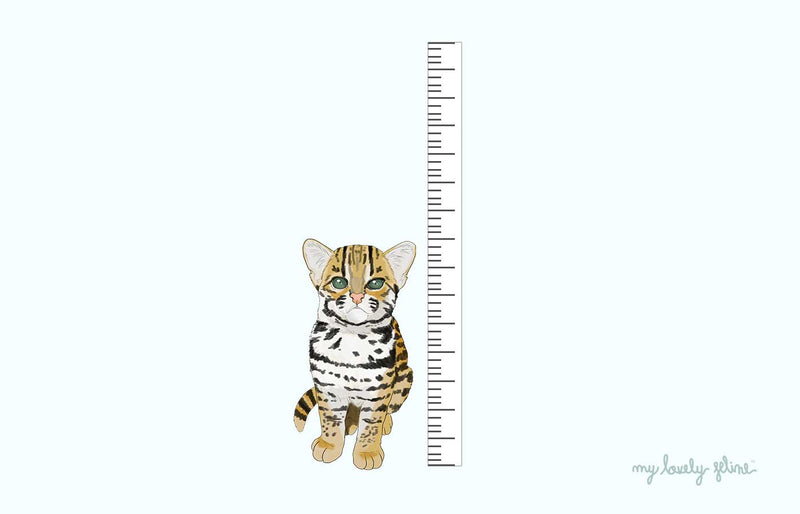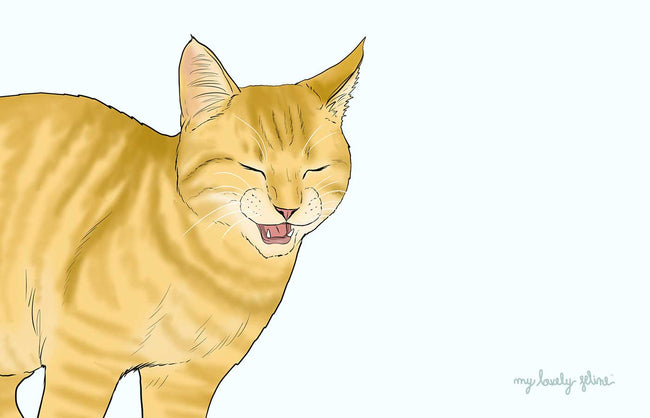—Feline Behavior Specialist 🇺🇸
|
Cats come in all shapes and sizes, but how do you know when they’re done growing? When do you exchange kitten food for cat food? What are their developmental stages? Each cat is an individual and there is some variation between breeds too, but there are general timelines that you can reference as your cat ages. |
Full-Sized
A kitten’s growth is most noticeable in the beginning when they gain about a pound a month, and it tends to slow as they get closer to being full grown. Most cats are fully grown by the time they reach 12 months, although some can grow up to 18 months, and Maine Coons, a large domestic cat breed, grow up to 24 months.
As far as size, the average domestic cat weighs 10 lbs., but the average Maine Coon is around 20 lbs. If you have a specific breed, research the average size so you know how your kitty compares. Size is determined mostly by genetics, and as a general rule of thumb, males tend to be larger than females.
I get a lot of questions about when to switch from kitten food to adult food. You’ll typically do this when your kitten reaches 9-12 months of age.
I know, that’s sort of a big range, but you can talk to your vet about how your kitten is growing and if they’re at the point when they seem like they could gain too much weight, you’ll want to switch them to lower calorie adult food. Kittens should only be chubby when they are very small and their bellies are filled with milk.
My cat Beaker transitioned to adult food around 10 months because he had grown like a weed! One of my favorite things about that is he was malnourished and sick when I got him at 4 weeks, so it shows that even if a kitten has a rough beginning, they can grow to be big and strong!
Now let’s take a quick look at other milestones.
Socialization - Kittens
The most sensitive period for socialization in kittens is from 2-7 weeks. Being handled by multiple people during this time helps a kitten be less fearful of humans, but there are also genetic factors that contribute.
It’s important that socialization continues through 16 weeks. Although earlier is better, continuing to expose kittens to people and new things with only help in the long run. It’s important to note that older kittens or cats can be socialized, it’s just much more difficult.
About 15% of cats are resistant to human socialization no matter what, and scientists believe there is a genetic component impacting this.
Sexual Maturity - Adolescence
Sexual maturity typically occurs during adolescence at 4-9 months (adolescence lasts up to one year). This can be particularly problematic for a very young mother who is still a kitten herself. Many large city animal shelters and rescues will approve spaying and neutering at 2 or 3 months to prevent procreation.
Mothers can die during labor, kittens born stillborn or too early, or young mothers may not even know what to do. Spaying and neutering help lessen the occurrence of these events while also decreasing the risk for reproductive-related cancers.
Adults
A cat is a young adult from 1-6 years and a mature adult from 7-10. During this time, you may notice their metabolism slow and their energy level decrease. I feel this is most noticeable during the mature adult phase.
This is the prime of your kitty’s life and typically when they’re the healthiest, so make sure to spend lots of time with them and enjoy them.
Seniors
Cats are labeled seniors from 10-15 years old. Cognitive function starts to break down at 10-12 years. This doesn’t mean you’ll necessarily notice it, but it’s just good to know there will be small changes in your cat’s brain.
It’s a good idea to have your cat evaluated for arthritis and get them on a joint supplement if needed. This is also the time when chronic diseases like hyperthyroidism and kidney disease may appear.
Super Seniors
Once a cat reaches 15, they’re in the super senior crowd. Keep an eye out for any chronic diseases to crop up, with kidney disease being one of the most common to hit this group.
Sometimes they can lose hearing or vision, and that can lead to behavioral challenges. Dementia may also become apparent, with loud vocalization, confusion, and wandering.
Do your best to keep things as routine and predictable as possible to keep their stress low. Don’t be concerned if your super senior spends a lot of time sleeping. They’ve definitely earned it.
Conclusion
Now you know what to expect as your cat ages. Remember that medical and behavioral challenges can crop up at any time, so make sure to talk to your vet about any changes you see.
This will help you tackle challenges as soon as they appear, and you’ll have a better chance of success. Also, be sure to take your cat for annual wellness exams and vaccinations to keep them healthy and enjoying life!
Sources
PetMD, At What Age Are Cats Fully Grown?
Landsberg, G., Hunthausen, W., Ackerman, L.. Behavior Problems of the Dog & Cat, 3rd Edition. 2013, p. 33.
LeBeau, Denise. Catster, When Do Cats Stop Growing?
Todd, Zazie. Companion Animal Psychology, The Sensitive Period for Socialization in Puppies and Kittens.
Article by Elizabeth Italia 🙋♀️
Cat Behavior & Fostering Specialist




